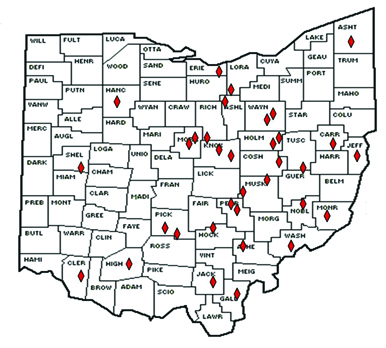How are your pastures growing? If you are like most you would reply in terms like fast or rapid.
It is the month of May and pastures should be right in the middle of the ‘spring flush.’
‘Spring flush’ is the term to describe the rapid growth of our cool season forages during April, May and June.
From March to June cool season forages will complete 60 percent of their annual production.
Knowing that does not really help you manage your pastures to provide feed for your livestock. We expect pastures to meet the nutritional needs of our ruminant livestock for at least six months.
Some graziers plan for their pastures to supply nine to 11 months of high quality feed. So how much feed do you have today? How much is being grown?
It is amazing that graziers say their focus is on the forage but they don’t measure it. Many of you could probably quickly come up with how much hay, silage or concentrate feed you have.
Good reasons
There are many good reasons why graziers should measure the amount of forage in their pastures. Measuring pasture growth can give you valuable information during a grazing season.
It can help you make decisions in regard to your grazing management.
Using pasture growth measurements can help you decide to slow or speed up the grazing system, change stocking density, consider planting alternative forages or fertilize before you need the forage and when there is adequate soil moisture to still grow more forage.
Two objectives
The Ohio Pasture Measurement Project was started in 2005 with three producers. It has two objectives — to provide a source of current, objective information on the relative performance of forages growing in Ohio accessible to producers across the state; and to demonstrate the use of pasture measurement/monitoring to aid in the management of grazing.
Since 2005 the number of people participating in the project has increased to more than 30 in 2009.
These 30 volunteers from across Ohio measure the same pasture field every week using a commercially available rising plate meter and report the measurement.
From that measurement we then calculate how much the pasture has grown since the last measurement.
Weekly growth information
The weekly growth information will now be included in this publication. The following table shows the growth from pastures participating in the project.
The information is reported in pounds of dry matter grown per acre per day. This helps relate pasture mass into feed terms.
The table contains the reported results as of the published date.
The volunteers are measuring their pastures on their schedule. We get reports every day of the week. Some reports may be delayed for various reasons.
Updated blog
Results that come in late are still included in the data and are updated on the Ohio Integrated Forage Management Team’s blog at http://ohioforages.blogspot.com.
What can you gain from this information? First the average growth last week was 67.3 pounds per acre per day. This can be easily related to feed.
Your livestock consume between 2-4 percent of their body weight in dry matter each day. A 1,500-pound beef cow eating 3 percent of her body weight consumes 45 pounds of dry matter.
So each day last week you were growing 22 pounds more feed per acre than she was eating. You may change your stocking density to account for this or pull some out of the grazing rotation and make a first cutting of hay on those.
Your pastures could have grown the minimum, less than six pounds of dry matter per acre per day. This would mean you need 7.5 acres to grow enough feed for that same cow.
If you grew the maximum, close to 140 pounds per acre per day, you could feed three cows on one acre.
Growth changes
Watching growth from week to week you will see when growth changes. Changes in growth may mean you need to adjust your grazing management.
When growth slows later this year, your rotation may need to slow down. You might need to bring more acres into the rotation.
We hope you will find this information useful as you make decisions about your grazing management.
Week Starting: May 3
Number of fields reporting: 21
Pounds of dry matter per acre per day
Minimum Growth: 5.4
Maximum Growth: 139.8
Average Growth: 67.3













